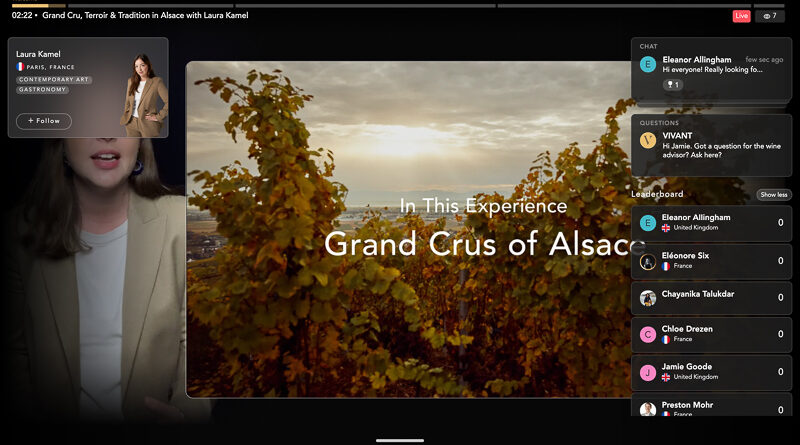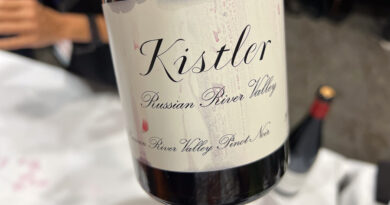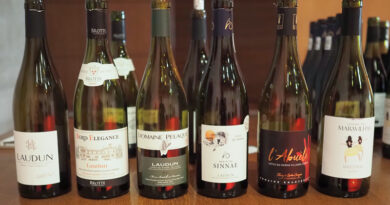Vivant: a new interactive online wine experience
Michael Baum, Silicon Valley entrepreneur, entered the wine world in 2014 when he bought Château de Pommard in Burgundy. As well as turning this classic domain around, he’s also got other ideas, and one of them is Vivant, a new membership-based online wine experience.
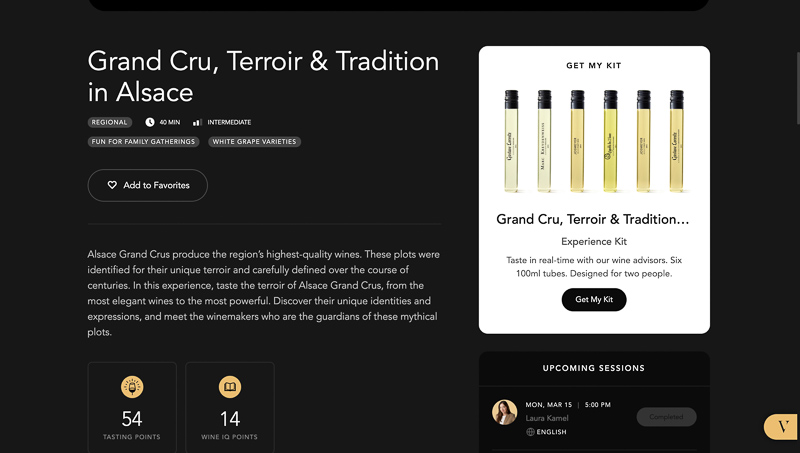
‘The aim of Vivant is to recreate the magic of wine experiences without the carbon footprint of physical travel,’ says Baum. ‘We have brought together an international team of wine educators, product designers, software engineers and media producers to create a new platform where people can meet responsible winemakers around the world and taste their wines alongside expert wine advisors, wherever they are.’
I recently took part in one of these sessions, which looked at the Grand Cru vineyards of Alsace.
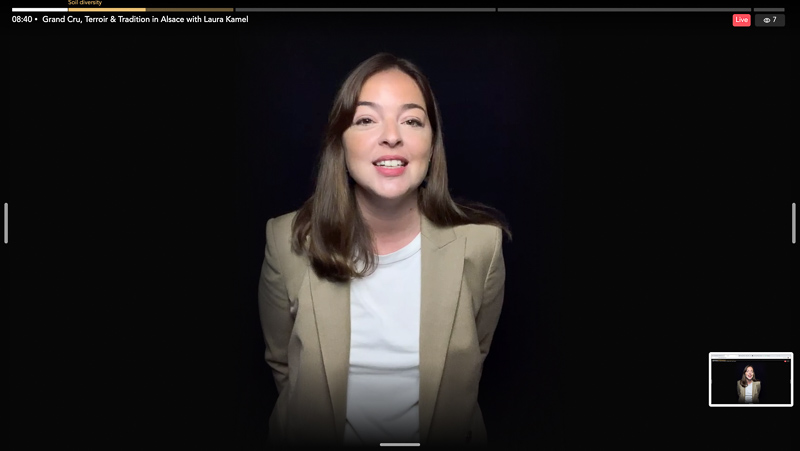
Vivant tasting sessions take place on the dedicated platform. It’s like a very glitzy version of Zoom, and it has been cleverly designed. They are presented by one of a team of wine advisors, most of whom are French. They are all beautiful people.
The wines are bottle in 100 ml tubes from https://www.tubes.nl/, which is enough for two tasting pours.

This session was led by Laura Kamel. It’s a slick, tightly scripted event, with lots of interaction. For example, an element of competition is introduced. Each person has to answer questions, and there’s a leaderboard showing how many points you have accumulated.
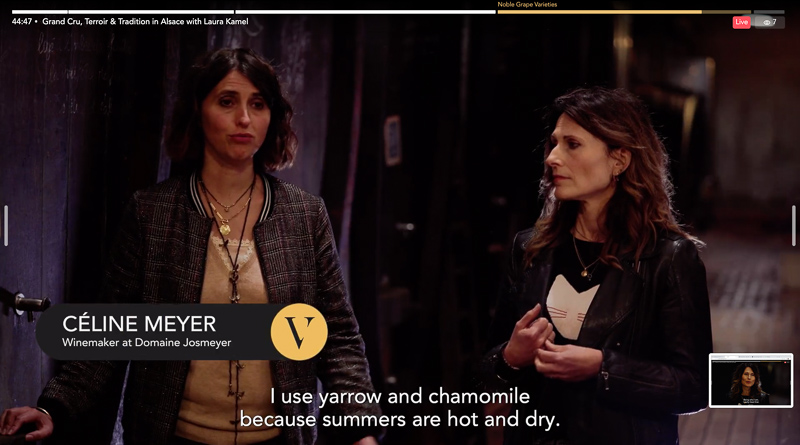
Kammel gave an introduction to each producer (four were represented here), and there was a brief video featuring each. Then we get to taste, and this is done using the dedicated Vivant tasting methodology. It’s a bit like the WSET SAT, but more visual, sharing the same reductive methodology. You are asked to assess the colour; then describe the aromas; then describe what you can find on the palate. If you get it right, then you score points.
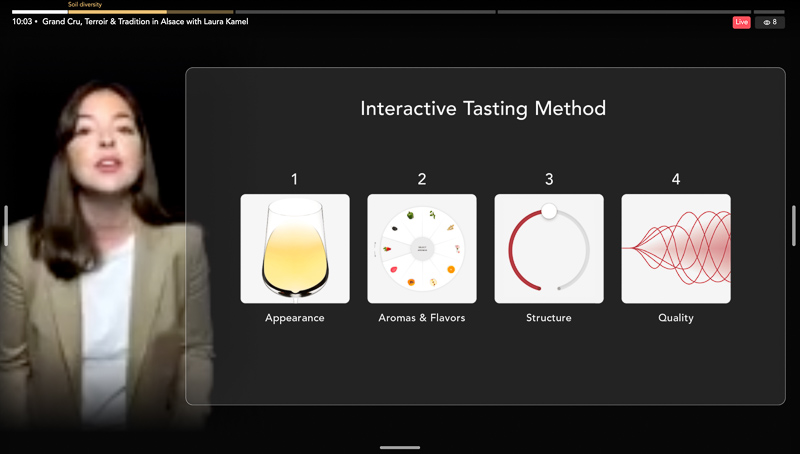
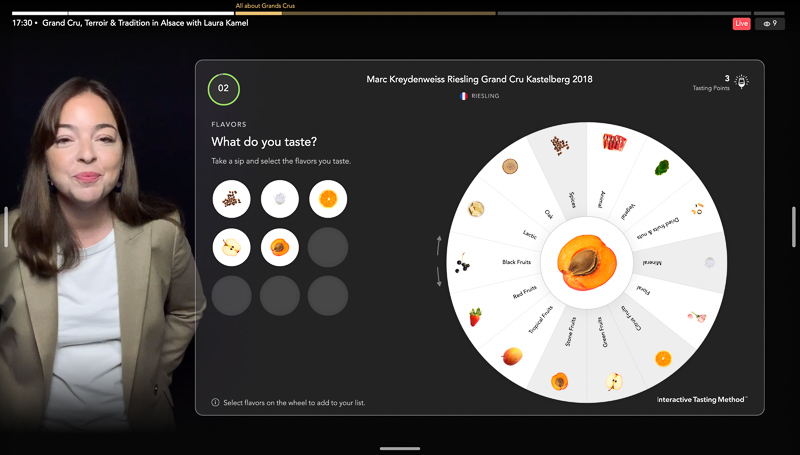
Overall, it has a very ‘wine education’ feel to it, and it is pitched at the level of the interested consumer. This isn’t for wine geeks, who might find it a bit contrived and basic.
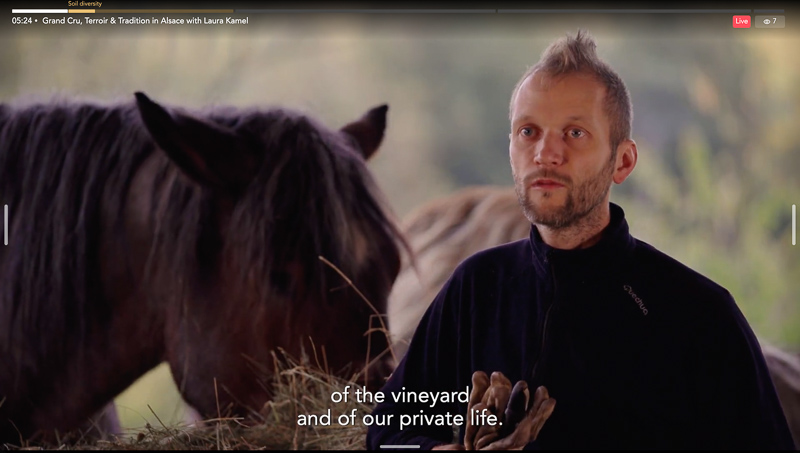
The problem with this sort of approach is that it is very hard to get people to describe what they smell and taste. There has to be simplification, but simplifying the approach makes it jar a little – it seems artefactual. People learn to recognize flavour ‘objects’ – combinations of lots of different chemicals. When we taste a wine, it is a whole. We find it incredibly difficult to split it into smaller aroma or taste components. But it is a useful start in learning about wine, I suppose.
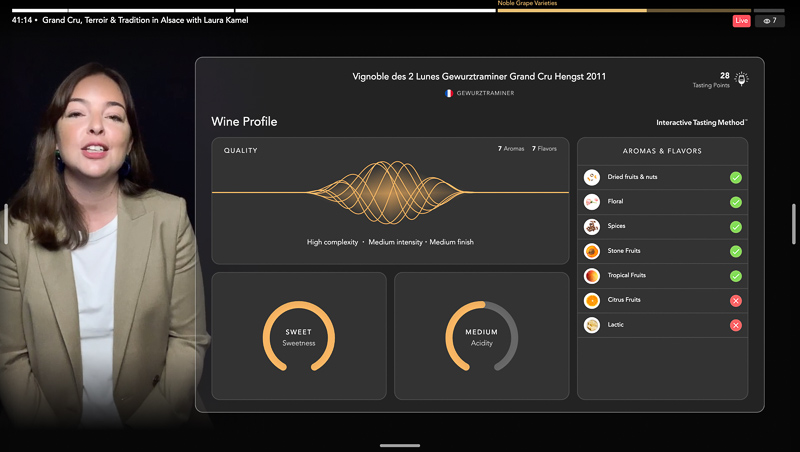
The wines:
Gustav Lorenz Riesling Grand Cru Kanzelberg 2016 Alsace
Taut and citrussy, with nice intensity. It has a pithy edge and a hint of honey, as well as some stoniness. Dense and structural with good acidity. 92/100
Kreydenweiss Grand Cru Kastelberg Riesling 2018 Alsace
This has a honeyed, appley edge with a touch of nuttiness and layered citrus fruits. The palate has lively acidity and some spice on the finish. Subtle oxidative hints. Lovely complexity. 93/100
Josmeyer Grand Cru Brand Pinot Gris 2014 Alsace
Granite soils. Golden colour. Sweetly aromatic with apples, table grapes and some honey. On the palate this has a bit of sweetness and good acidity. Bold and textural with a fine spiciness, showing pear, spice and baked apples as well as some apricot. 93/100
Vignoble des 2 Lunes Grand Cru Hengst Gewurztraminer 2011 Alsace
Wonderfully aromatic with rose petal and table grapes, and even some bacon. The palate is off dry and textural with lovely savoury notes as well as sweetness. Nice balance and a bit of grip, with orange peel, grapes and smoke. Complex. 94/100
We only tasted the four wines above in the tasting, but there were two more that we were instructed to taste at our leisure.
Josmeyer Grand Cru Hengst Pinot Gris 2015 Alsace
Honeyed and nutty with some spice. Aromatic and grapey with some savoury notes. Finishes dry. 90/100
Gustav Lorentz Grand Cru Altenbourg de Bergheim Gewurztraminer 2012 Alsace
Lovely lychee and rose petal nose. Rich and complex with some herby notes. The palate is fruity and rounded, and quite lively. Lovely hints of sweetness and some grapiness. Concentrated and seductive with some green tea and spice notes. 92/100
Annual membership of Vivant is £149, and then you pay for each tasting. This one was £57. I thought the whole experience was beautifully done, but this isn’t for wine geeks, and not everyone will warm to the competitive leaderboard and point scoring (although some will love this), and the rather stage-managed experience. A lot of thought has gone into the planning and execution of Vivant, and for the right audience, this will be perfect.
For more information: the Vivant website

